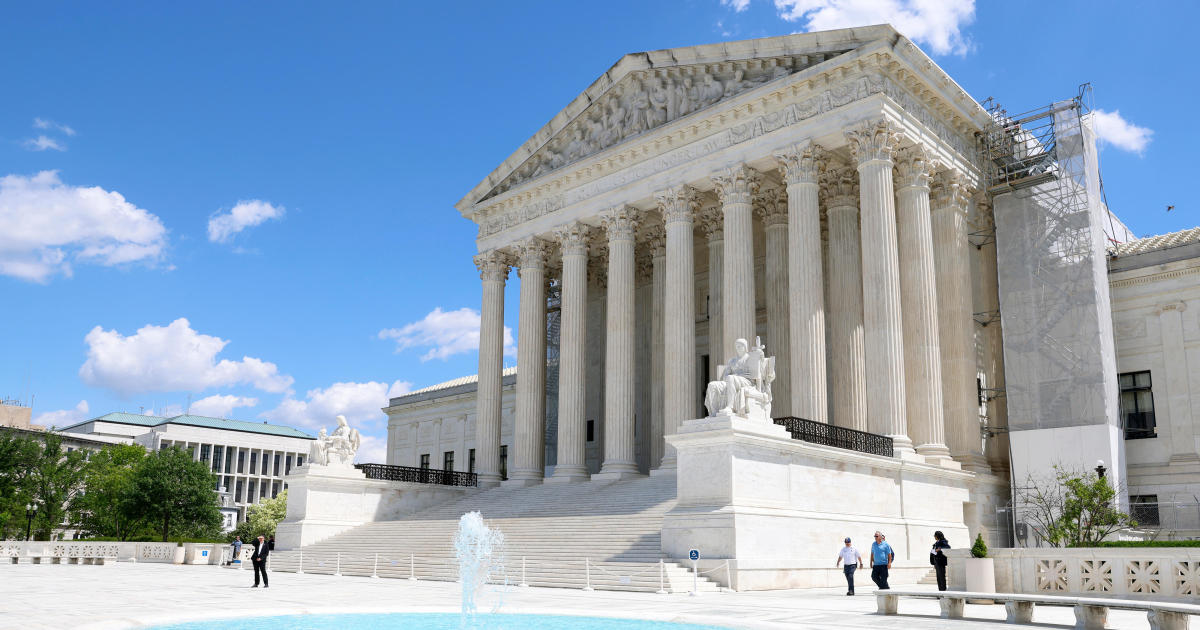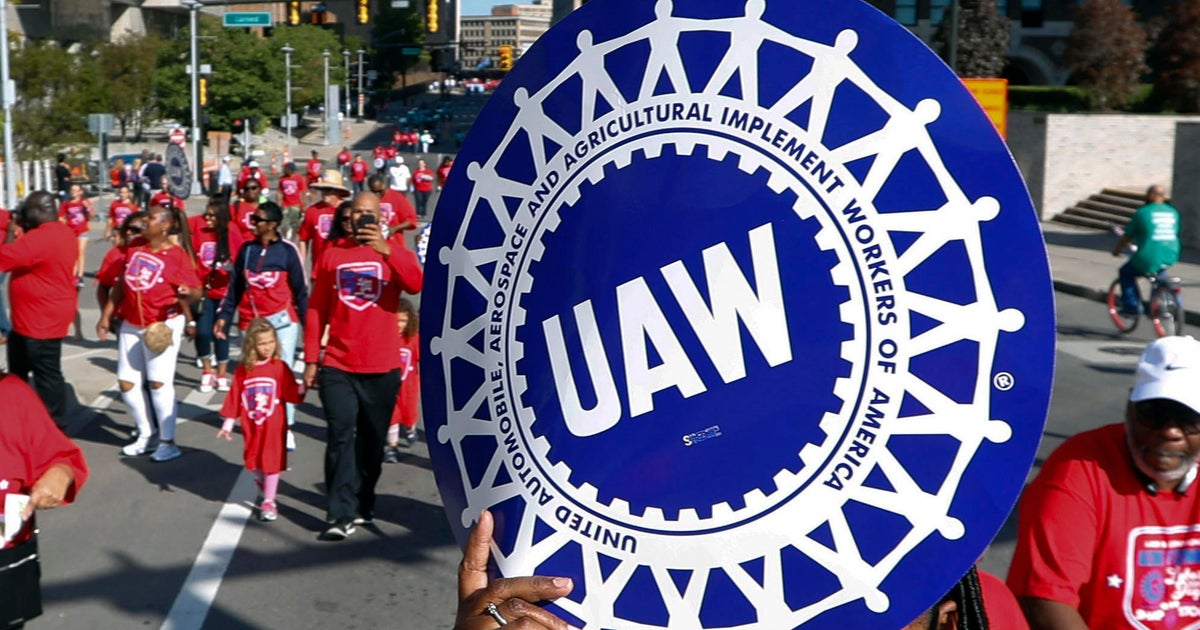Amid blockbuster decisions on affirmative action, student loan relief and free speech, Supreme Court's term sees Roberts "back on top"
Washington — The end of the Supreme Court's term last Friday brought momentous decisions on affirmative action, free speech and LGBTQ+ rights, and student debt relief, as the court's six-justice conservative majority continued to wield its influence.
But though the last days of the term saw the realization of conservative policy goals by the nation's highest court and a major setback for President Biden, it was the unexpected rulings that added complexity to the full term, particularly against the backdrop of last year's blockbuster decisions ending the constitutional right to abortion and expanding Second Amendment rights.
In the most closely-watched cases of the session — handed down in its final two days — the Supreme Court's conservatives asserted their power: It brought to an end the consideration of race as a factor in college admissions, said Colorado could not compel a graphic designer to express a message that defied her closely held beliefs, and invalidated Mr. Biden's plan to wipe away $430 billion in student loans.
But the term also defied predictions with decisions on election law, voting rights, and a measure giving preference to Native American families in adoption and foster care proceedings, in which members of the Supreme Court's conservative bloc, led by Chief Justice John Roberts, joined with the three liberal justices to form a majority.
"My biggest takeaway is that the chief justice is back on top," Allison Orr Larsen, a law professor at William & Mary, told CBS News.
Roberts was in the majority 95% of the time during the Supreme Court's most recent term, according to an analysis conducted by Empirical SCOTUS, a frequency exceeded only by Justice Brett Kavanaugh, at 96%. He also authored some of this year's most consequential decisions — the senior-most justice in the majority assigns who writes the opinion — on the Voting Rights Act, affirmative action and the student debt relief program.
"The Roberts court is still influenced by John Roberts, who is a jurist that definitely has a conservative ideology, and we saw that on the last day, but he's also an institutionalist," Larsen said. "He cares a lot about the court's fragility, and you could see that explicitly in the debt relief case."
In the dispute brought by a group of GOP-led states challenging Mr. Biden's plan to forgive up to $20,000 in student debt, the Supreme Court's conservative majority found the Biden administration overstepped its authority with the program.
Writing for the majority, Roberts stressed in the conclusion of his opinion that though the court was divided along familiar ideological lines as to the legality of the plan, "We do not mistake this plainly heartfelt disagreement for disparagement."
"It is important that the public not be misled either," he continued. "Any such misperception would be harmful to this institution and our country."
It was a notable coda for a court that, over the course of its two most recent terms, has upended precedents on abortion and now affirmative action, while enduring scrutiny over its ethics standards following reports about Justices Clarence Thomas and Samuel Alito's ties to wealthy Republican donors.
Roberts, who declined to join the five other conservatives in overturning Roe v. Wade last year but supported new limits on abortion, is not immune to the recent criticisms of the court and the public's perception of it, Larsen said.
"He's thinking about his court's legacy," she said. "That doesn't mean he's not going to stick to his conservative ideology when it matters most to him, but it does mean he is able to carve together a majority to move incrementally in a way that people doubted last term."
In the voting rights case, the Supreme Court invalidated a congressional map drawn by Alabama Republicans and declined to further weaken the Voting Rights Act to make it more difficult to challenge district lines that dilute the power of minority voters.
The court also rejected a controversial theory that would've given state lawmakers unfettered power to set the rules for federal elections in their states, preserving the authority of state courts to review election laws and maps enacted by state legislatures.
In the case involving the Indian Child Welfare Act, a seven-justice majority declined to disturb the law, with Justices Clarence Thomas and Samuel Alito in dissent.
These "surprise" decisions "demonstrate that at times, the most conservative position does not always win out, even in this extremely conservative court," Elizabeth Wydra, president of the Constitutional Accountability Center, a liberal judicial group, said in a call with reporters about the court's term.
Still, the court's expanded majority continued to realize long-term goals of the conservative legal movement, she said.
The high court curtailed the authority of the Environmental Protection Agency to regulate certain wetlands that qualify as "waters of the United States" under the Clean Water Act.
In the affirmative action cases, it ruled the race-conscious admissions programs at Harvard College and the University of North Carolina were unconstitutional and ended the use of race as a factor in admissions.
And the court continued its string of decisions in favor of religious plaintiffs, siding with the Christian graphic designer who objected to creating websites for same-sex weddings because of her religious beliefs. The First Amendment right to free speech, Justice Neil Gorsuch wrote for the majority, does not permit Colorado to compel the designer to express messages contrary to her beliefs.
That ruling came years after the Supreme Court in 2018 declined to address whether states can force artists to express messages that go against their beliefs in applying public-accommodation laws, which prohibit businesses open to the public from refusing service because of sexual orientation.
The latter two decisions, on affirmative action and the showdown over free speech and LGBTQ+ rights, brought fierce dissents from Justices Sonia Sotomayor and Ketanji Brown Jackson, who completed her first term on the court.
"With let-them-eat-cake obliviousness, today, the majority pulls the ripcord and announces 'colorblindness for all' by legal fiat," Jackson wrote in a dissent for the case involving admissions policies at the University of North Carolina. "But deeming race irrelevant in law does not make it so in life."
Jackson, the first Black woman to sit on the Supreme Court, wasted no time in making her presence known and authored three solo dissents during her first term. Neither Kavanaugh nor Justice Amy Coney Barrett authored any solo dissent in their first terms on the high court.
She was also the most active participant in the court's oral argument sessions, speaking more words than any of her eight colleagues, according to an analysis by Empirical SCOTUS.
Wydra said Jackson's presence on the Supreme Court could usher in a new chapter "where we see a real, sustained challenge to the conservative originalism of the current supermajority, a challenge that is equally rooted in text and history."
"Justice Ketanji Brown Jackson challenged the dominant conservative originalist narrative of the Constitution, marshaling constitutional history herself to make clear that our national charter demands meaningful equality and supports a genuinely thriving multiracial democracy," she said.
Jackson also formed a cross-ideological alliance with Gorsuch in several cases, joining his concurring opinions in two — the first, a copyright dispute involving Andy Warhol's use of a 1981 Prince photo, and the second, involving states that seize and sell property to settle unpaid real estate taxes.
"She is one of the strongest liberal justices we've seen in at least a generation, if not more," Craig Konnoth, a law professor at the University of Virginia, told CBS News. "I think she has the potential to provide leadership on the court in a way we haven't seen in a long time, if ever."
Though Jackson, as one of three justices in the liberal wing, has less of an impact with her vote, Konnoth said her writings may help people feel their voices are represented at the Supreme Court and championed by a "powerful speaker and writer."
Now in recess for the summer, the Supreme Court will return for its next term in October, and court watchers expect the conservative majority will wield its power in cases involving administrative law. One of the battles presents the court with the chance to limit the power of federal agencies and overrule the Chevron doctrine, which says courts should defer to an agency's reasonable interpretation of statutes when laws are ambiguous. Another challenges the funding mechanism for the Consumer Financial Protection Bureau, a target of conservatives since its creation in 2010.
The Supreme Court will also weigh whether a 30-year-old law that bars people subject to domestic violence protection orders from having guns comports with the Second Amendment.
"These cases may not be the blockbusters that we saw this term and the term before. They may not garner the same level of the public attention and the media attention, but they are incredibly important, with the potential to have huge impacts on our nation, its people and our economy," said Brianne Gorod, chief counsel of the Constitutional Accountability Center. "The next term is shaping up to be a term that is no less busy and no less consequential than the one we just finished."



